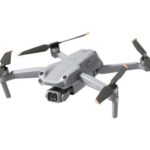Introduction
The Canon EOS R10 is a tiny new mid-range mirrorless camera aimed at beginners and less experienced users looking for a compact, affordable yet still very capable camera for both still photos and video.
It has a 24.2 megapixel APS-C CMOS sensor which is partnered with the very latest Digic X processor.
This is a fast camera – 15fps burst shooting is available when using the R10’s mechanical shutter and 23fps when using the electronic shutter, both with continuous auto-focus and auto-exposure.
The native ISO range runs from 100-3200, which can be expanded to ISO 51200, and the top shutter speed is 1/16,000sec when using the electronic shutter.
Thanks to its Digic X processor and Dual Pixel CMOS AF II autofocus system, the EOS R10 offers the same deep-learning artificial intelligence based automatic face, eye, animal and vehicle AF tracking modes as the full-frame R3, R5 and R6 models.
On the video side, there’s 4K/60p recording for up to an hour and Full HD footage at frame rates up to 120p, which potentially makes the Canon R10 just as appealing to videographers as to stills photographers.
The Canon R10 features a 3-inch 1,040K-dot LCD vari-angle monitor with a touch-screen interface and an integrated OLED electronic viewfinder with 2.36M dot resolution, magnification of 0.95x and 120fps refresh rate.
There’s also a UHS-II SD memory card slot, built-in Wi-Fi and Bluetooth connectivity, integrated USB Type-C, mini HDMI, microphone port and a new multi-function accessory shoe.
The Canon EOS R10 is priced at £899.99 / €1079.99 / $979.99 body only in the UK, Europe and USA respectively. It is made in Japan.
Ease of Use
Intended to be the spiritual successor to the popular EOS Rebel / EOS xxD series and EOS 77D DSLRs, the new Canon R10 is specifically targeted at people who may be new to photography or those who have outgrown the photographic capabilities of their smartphone.
Along with the R7 model that was announced at the same time, the EOS R10 is the first ever Canon APS-C sensor mirrorless camera to use the same RF lens mount as the company’s full frame cameras.
This is the main differentiator between these two new R-series models and the existing EOS M-series, which use a different EF-M lens mount.
Consequently, you can either use Canon’s equally new range of RF-S lenses which are designed specifically for the R10 and R10 (and all future Canon R-series APS-C cameras), or you can use the more established full-frame RF lenses, with an accompanying change in the focal length due to the 1.6x crop factor involved with mounting full-frame lenses on an APS-C sensor.
In addition, Canon’s huge number of EF and EF-S DSLR lenses can be used with the R10 and R7 by attaching the optional EF-EOS R Mount Adapter, which is very handy if you already have a large collection of legacy lenses.
What you can’t do, sadly, is use the EF-M lenses that were designed for the EOS-M system on the R10/R7, which means that there’s no clear upgrade path for users of Canon’s first APS-C sensor mirrorless system other than to start over again.
It also means that there aren’t very many lens options for the R10 and R7 from day one – Canon only released two rather uninspiring lenses alongside the new bodies, the super-compact RF-S 18-45mm F4.5-6.3 IS STM standard zoom which has a collapsible design and the more versatile RF-S 18-150mm F3.5-6.3 IS STM zoom.
Both lenses commendably have built-in optical stabilisation and don’t cost the earth, but the maximum apertures are very slow and neither are particularly wide. They’re fine if you’re just starting out and don’t already own any compatible Canon lenses, but we’d hope to see some more inspiring RF-S lenses launched as soon as possible in order to compete on a more level playing field with the likes of Sony and especially Fujifilm.
The 24.2 megapixel sensor in the Canon EOS R10 is a re-engineered version of a sensor design that has previously been used in many Canon models, including the Canon EOS M50 Mark II and the Canon EOS 850D.

















